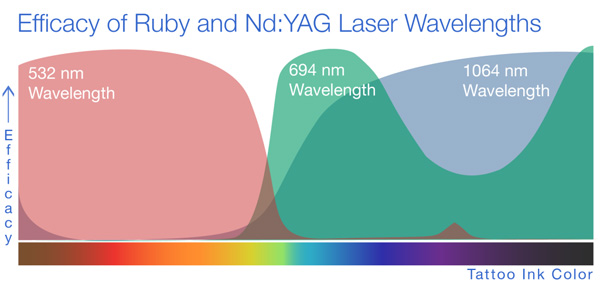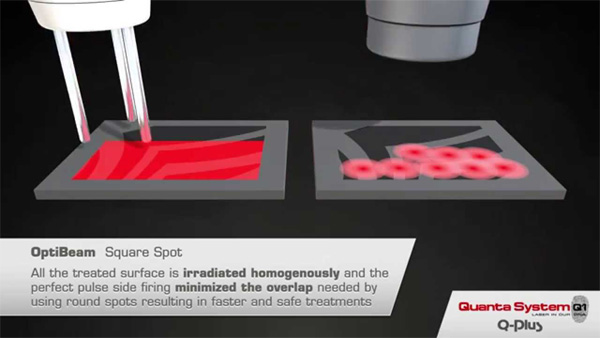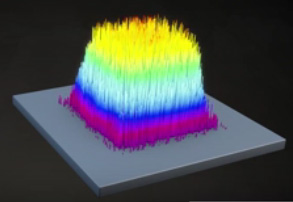
Laser Tattoo Removal
 Laser Tattoo Removal is the safest, most effective, non-invasive method for the removal of tattoos. An estimated 20 million Americans have tattoos, and many of them now feel that their tattoo does not fit their new image or career, while others need a cover-up to make space for new ink. At Allure MD Spa & Wellness Center we use the best and proven laser technology for the removal of tattoos of all colors, and best of all, all procedures are administered by a physician.
Laser Tattoo Removal is the safest, most effective, non-invasive method for the removal of tattoos. An estimated 20 million Americans have tattoos, and many of them now feel that their tattoo does not fit their new image or career, while others need a cover-up to make space for new ink. At Allure MD Spa & Wellness Center we use the best and proven laser technology for the removal of tattoos of all colors, and best of all, all procedures are administered by a physician.Laser Tattoo Removal Technology
Laser Tattoo Removal utilizes a single wavelength of laser light energy to fragment or vaporize the ink particles in your skin without damage to your skin. Each color of ink in your tattoo requires a different wavelength of laser light. We use gold standard Italian-made and FDA cleared Quanta Q-Plus C Q-switched laser with 3 wavelengths of true laser light to give you the most comprehensive and safest treatment possible. This is hands-down the best laser technology available today to treat all ink colors. The Quanta Q Plus C laser machine packs more power into one cosmetic laser system than most lasers because it offers not only a Q switched Nd:YAG laser but also a Ruby laser, which is what makes it so effective in removing stubborn tattoo inks like red, black, green and blue. It is has the least chance of scarring or causing pigmentation issues than any other lasers.
Q-Switch pulse technology works at a fast nano-second or at 1/1,000,000,000 of a second. This means that the ink or pigment is heated and crystalized into minute (microscopic) tar-like particles. The macrophages then digest these particles via the body’s waste removal system, which over time will leave the skin free from any tattoo ink.
Lately new and more expensive PicoSure technology came on the market, claiming faster tattoo removal and fewer treatments. This is actually incorrect as these lasers have a single wavelength of 755nm, which doesn’t target specific ink colors and cannot treat red or deep black colors. In addition, due to higher energy being used, more scarring and pigmentation issues arise. See more information about this here. To see why Quanta Q-Plus C laser is superior to other tattoo removal lasers on the market, click here.





Quanta Q-Plus Switched Laser
Quanta Laser Tattoo Removal of Green, Yellow and Black Ink
Before and After Photos
Click here to see Before and After photos
Tattoo Removal Frequently Asked Questions
Before Tattoo Removal Treatment
Shave all hair around the area to be treated. Do not take Aspirin, Aleve, Motrin (or other ibuprofen products).
Laser Tattoo Removal Treatments
Each Laser Tattoo Removal session will last from 5 minutes to thirty minutes depending on the size of your tattoo and number of different colors contained in it. Many patients report the treatment to feel similar to rubber band snaps. If necessary, a topical anesthetic cream or lidocaine shot can be applied for longer sessions. Most patients tolerate a treatment with Zimmer generated cold air or just an icepack to cool the skin at the time of treatment.
After your Laser Tattoo Removal treatment, Vaseline and a non-stick or non-adherent dressing will be applied. It is common to experience some degree of redness, swelling, bruising, peeling and mild crusting in the first days after your treatment. Skin care after a treatment requires applying Vaseline to the laser treated skin followed by a non-stick dressing until all skin irritation has resolved. This may take several days. After the skin has healed, it is very important to apply sunscreen to the area being treated if exposed to the sun. Tanning the skin will prevent or block the laser light from effectively reaching the tattoo ink in your skin.
How Many Laser Tattoo Removal Sessions Are Required?
The size, color, location, and age of the tattoo are major factors that help to determine the number of laser sessions necessary to effectively remove your tattoo. In general, single color, black tattoos are also most amenable to laser tattoo removal, but many other colors can be effectively treated. Amateur tattoos are usually easier to remove professional tattoos. There is a scale, called the Kirby-Desai scale that gives a rough estimation. The higher the score on this scale, the more treatments it will take to remove the tattoo. The factors involved include: skin type, location, colors, amount of ink, scarring and tissue change as well as the layering of tattoos. During your consultation, Dr. Kogan will examine your tattoo and discuss in detail the factors that will influence the number of laser sessions required to treat your tattoo.
Laser Tattoo Removal Results
The results and appearance of the tattoo vary from patient to patient. After each treatment session, you will see the tattoo lighten over a period of weeks. Due to the various types and colors of ink, the results and number of treatments will vary. Typically, multiple treatments will be required. Treatment sessions are scheduled at 6 to 8 week intervals.
After Tattoo Removal Treatment
In the first 24 hours:
Apply an ice compress periodically.
Rest and elevate the area that was treated.
Limit unnecessary physical activity including exercise, swimming, steam rooms and saunas.
After 24 hours (and until you are healed):
Apply moisturizing or sunburn cream twice a day to moisturize the area.
You can resume all of your normal activities except swimming (unless fully healed).
DO NOT POP BLISTERS or pick scabs. You risk infection and scarring if you do this.
Avoid the sun and tanning beds while you heal.
Wait 7 – 12 weeks between treatments as advised by your treating clinician.
Permanent Makeup
We do not remove permanent makeup tattoos due to the high incidence of adverse effects that can occur when lasers come into contact with permanent makeup tattoo ink. Due to chemical composition, adverse reactions may include the makeup ink turning black and becoming permanently embedded in your skin. These types of reactions have a very low occurrence rate in non-permanent makeup tattoos.
Learn More About Laser Tattoo Removal at Allure MD Spa in Morganville, Marlboro Township, Monmouth County, Central NJ by calling 732-851-7005
Click here for more information